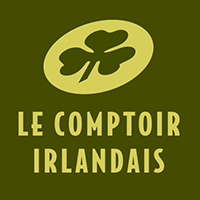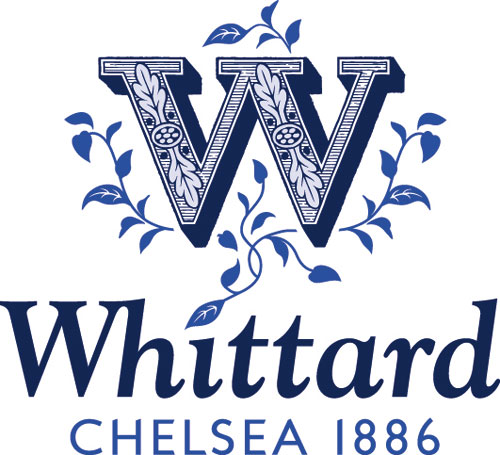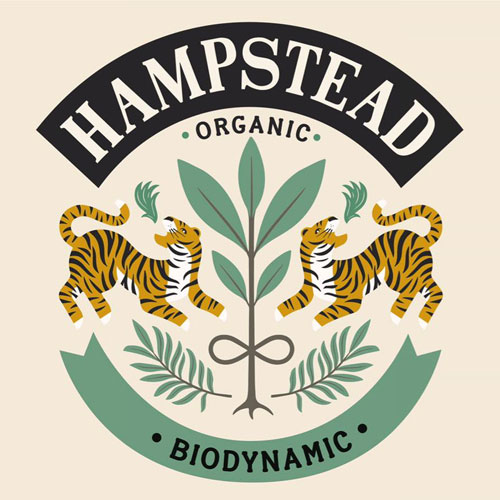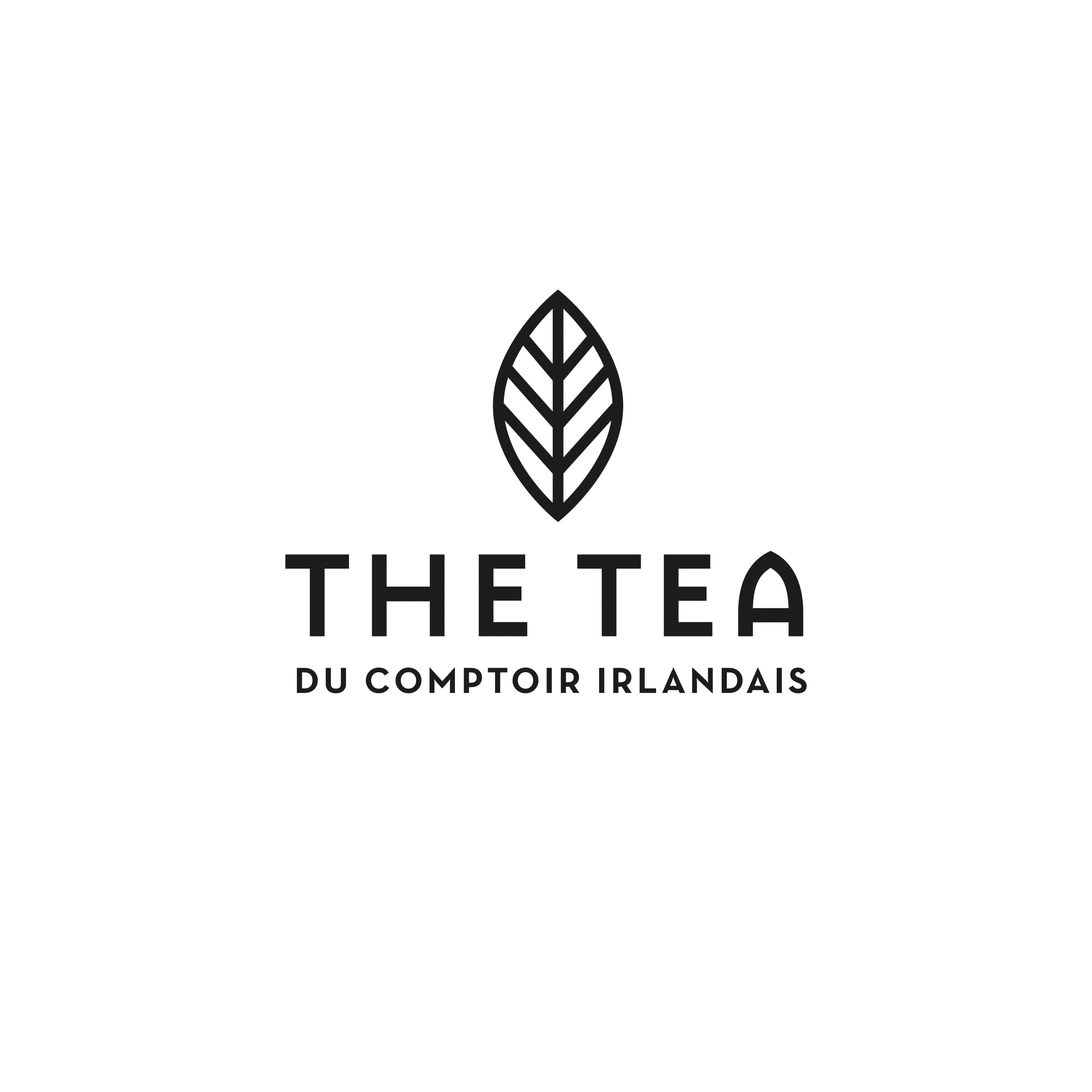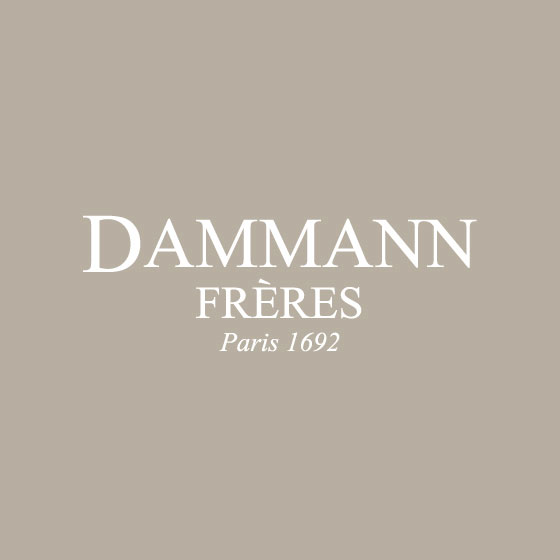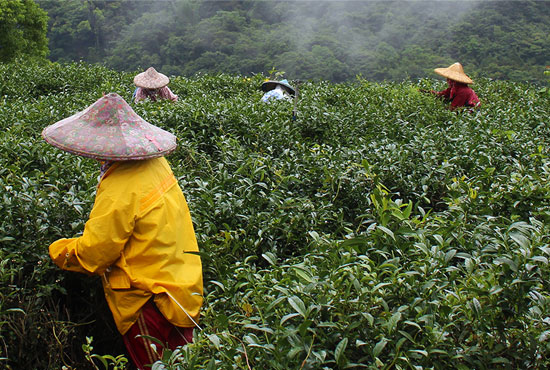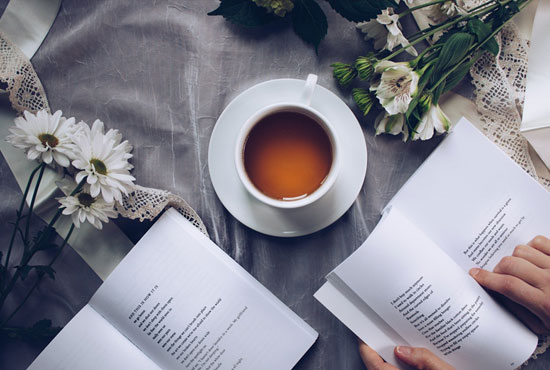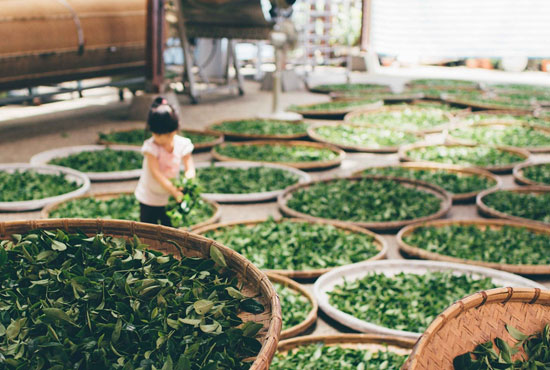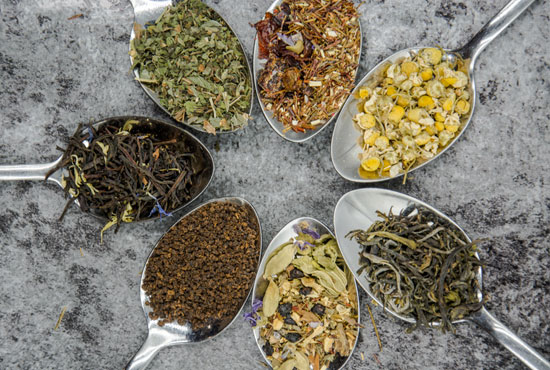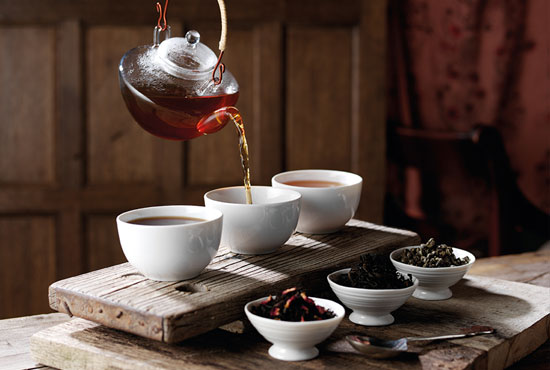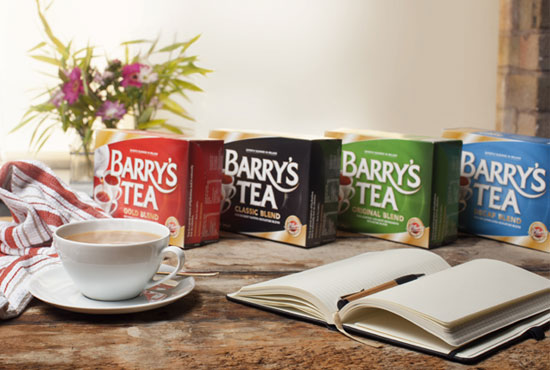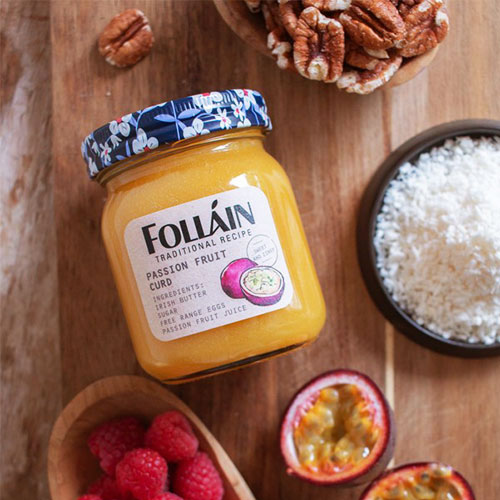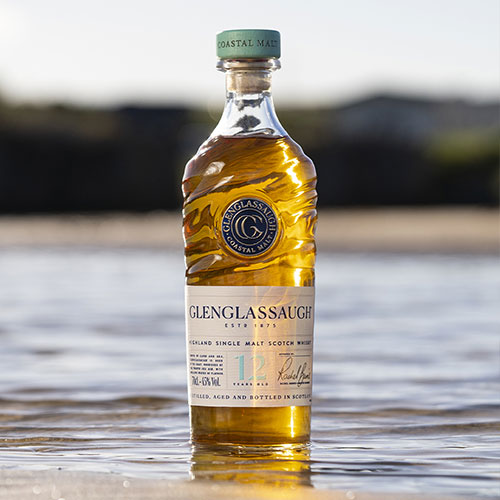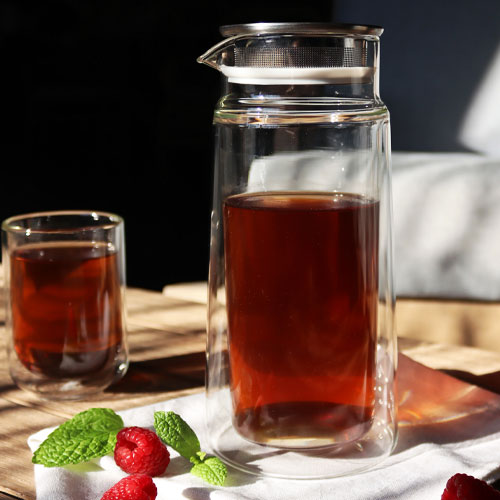TEA COUNTRIES
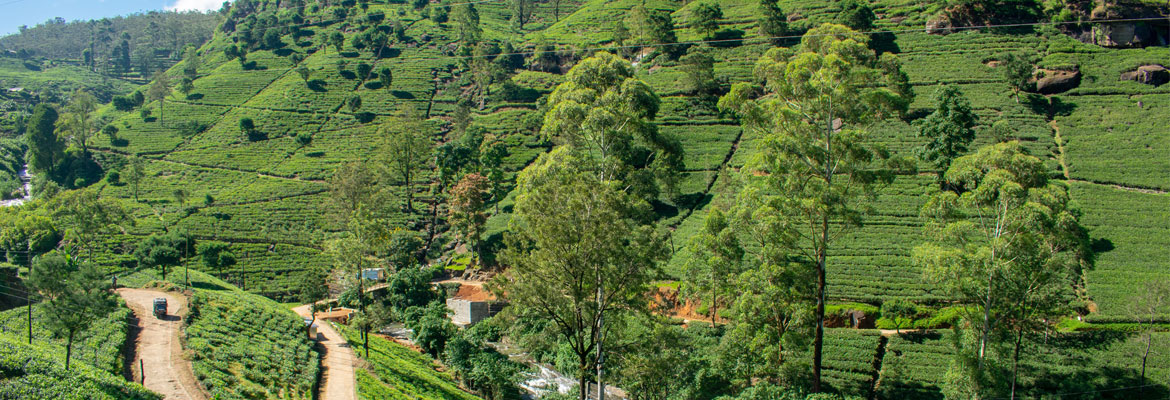
Culture and tea consumption in the world (custom and local brands)
Originally, our ancestors drank only green tea. It was by "accident" that black tea appeared in Europe ...
In the 17th century, a shipment of green tea from China arrived in London after a particularly long journey.
During the navigation, the crates would have molded and the green tea would have turned into black tea. Not very knowledgeable, the English would have appreciated it a lot and would immediately recommend it to the Chinese.
Ireland
Irish tea is a tradition and Ireland has always been one of the countries with the highest per capita tea consumption in the world. It democratized in the 1830s and, despite opposition from British religious authorities, it quickly became very popular. During World War II, Great Britain reduced its imports via London and Ireland established trade links with producing countries: first India, then East Africa.
While tea consumption is very similar to that of the UK, there are a few differences: the country adds more milk to tea and thus consumes stronger teas.
Our Irish tea houses:
Word of mouth developed the brand and Barry’s became part of the Irish brands national heritage. Today, the brand represents 40% of the tea market in Ireland and is exported worldwide. Barry’s processes are respectful of tea-producing communities, and ensure steady controls of incomes while supporting local projects. A commitment to quality that has made Barry’s the favourite tea of the Irish for more than a century...
- Irish Breakfast (the green one)
The lightest and most refreshing of Barry's Tea's tea blends, Irish Breakfast is better known in Ireland as the Original Blend.
It is mainly appreciated for its lively and sustained taste. This blend of quality black teas comes from the Assam Valley in India, Rwanda and Kenya.
It is rather light in aromas and is therefore the weakest in the range. It can be enjoyed throughout the day.
- Gold Blend (the red one)
The Gold Blend owes its name to its bright, golden colour. This uniquely tasting blend of black teas comes from the high mountains of Rwanda, Kenya and the Assam Valley of India.
Gold Blend is the brand's most consumed tea! It is also the most balanced of the range (weaker than Classic Blend and more intense than Original Blend). It is characterized by a unique taste, very refreshing and a golden colour. It is best enjoyed in the afternoon, during the traditional tea time.
- Classic Blend (the black one)
Classic Blend is a connoisseur's tea that makes every occasion special. This is the favourite of Denis Daly, Barry's Tea Master Blender.
This blend of high quality black teas comes from the most renowned tea gardens in India, Rwanda and Kenya. Its taste really stands out, it is powerful and very refreshing. Considered one of the best teas in Europe, it is also the strongest in the Barry's range. Drink it alone or with milk like the Irish do.
The Bewley's Limited Company is established in 1840 in Dublin. Since then, the company has been passionate about offering a wide range of blends of teas and coffees, and has major roasting facilities of in Ireland. More than 4000 hotels, restaurants and cafes serve Bewley's products every day in Ireland. One coffee from two served on the Green Island is a Bewley's.
- Irish Afternoon Tea (red)
The most powerful
- Original Blend Tea (green)
- Gold Blend Tea (gold)
- Irish Breakfast Tea (green)
The lightest
England
The arrival of tea in England took place under certain circumstances: the fashion at the time was in cafés which were constantly changing and growing in popularity. At the same time, Catherine of Braganza, Portuguese Infanta and young wife of the King of England, brought Bombay as a dowry with her habit of drinking tea throughout the day.
Thereafter, tea became a nationwide craze. After being appreciated in class, it quickly won over people of all classes and quickly became very successful.
Today tea is a pillar of British society: the English drink it all day long. They start with the Early Morning Tea, often still taken in bed with biscuits, then continue with the Breakfast Tea which accompanies a hearty breakfast, help themselves a cup around 11 a.m., which allows them to last until 'to the classic Five o'clock Tea. Finally, a last tea is often drunk in the evening, before bedtime.
Our English tea houses:
For more than 125 years, the Whittard of Chelsea house has shared its innovative ranges and its expertise in blends and flavours, thus offering fine and unique products. Thanks to an always innovative packaging, which has been able to reuse the prettiest patterns of the classic English style, and to creations with incredible flavours, Whittard of Chelsea is a must in the world of tea.
A new tea house is available at Comptoir Irlandais. Hampstead Tea offers teas that follow the principles of fair trade and biodynamic agriculture (Demeter). All packaging is 100% biodegradable. The individual bags are made of unbleached chlorine paper and the labels are sewn to the bag with string, no glue or staples are used.
France
The consumption of tea in France dates back to the 17th century. The market there is very fragmented, the big tea brands have established an image of easy-to-export "French tea", while the majority of the population tends to consume British tea bags.
The tea is not cultivated on the French territory because the climate does not lend itself to it. However, the big French tea houses transform the tea in France before exporting to Europe and Asia.
Since 2004, Le Comptoir Irlandais has been offering its own range of tea and rooibos.
The Tea offers fruity, spicy, tangy, floral or even woody teas… These blends are made by the "tea blender" which has selected the best aromas, the best spices and essential oils to obtain a well-scented and balanced tea. These blends offer a perfect and delicate harmony bringing to each tea an explosion of flavours.
Since 1692, the Dammmann Frères house has been a major player in the tea market. The experts at Dammann Frères seek out the best blends and the most subtle flavours. A quest for perfection whose sole goal is the satisfaction and pleasure of all tea lovers.
Producing countries:
The main tea producing countries are in Asia and Africa.
China is the largest producer of tea with more than one million tonnes produced each year. China accounts for between 30% and 35% of the world's tea production, and different varieties of teas are cultivated in various regions of the country. The oldest man-made tea plant is found in the Yunnan region, more than 3,200 years old.
India is the 2nd largest producer of tea with 900,000 tonnes and represents 25% of world production. There are very different varieties of teas due to the varying terrain and climatic conditions of the country. Darjeeling and Assam black teas are mainly grown there.
In 3rd position in the ranking of tea producing countries, we find Kenya with 10% of world production. The peculiarity of the teas grown on this land are worked by CTC, a production technique by which powder is obtained from the tea leaves, powder which is then packaged in paper bags. Most major brands of tea bags use tea from Kenya.
Sri Lanka, Turkey, Vietnam, Indonesia and Japan are also major tea producers.
China and India themselves consume 80% of their production and Japan 99% of theirs. Conversely, countries like Kenya, Argentina and Sri Lanka mainly produce for export. In total, only 40% of the world's tea production is exported.
